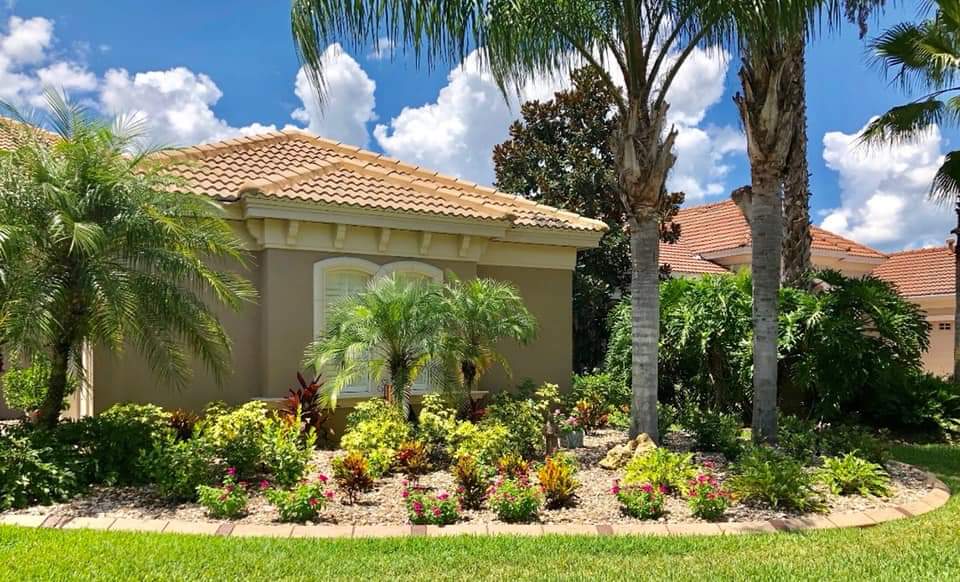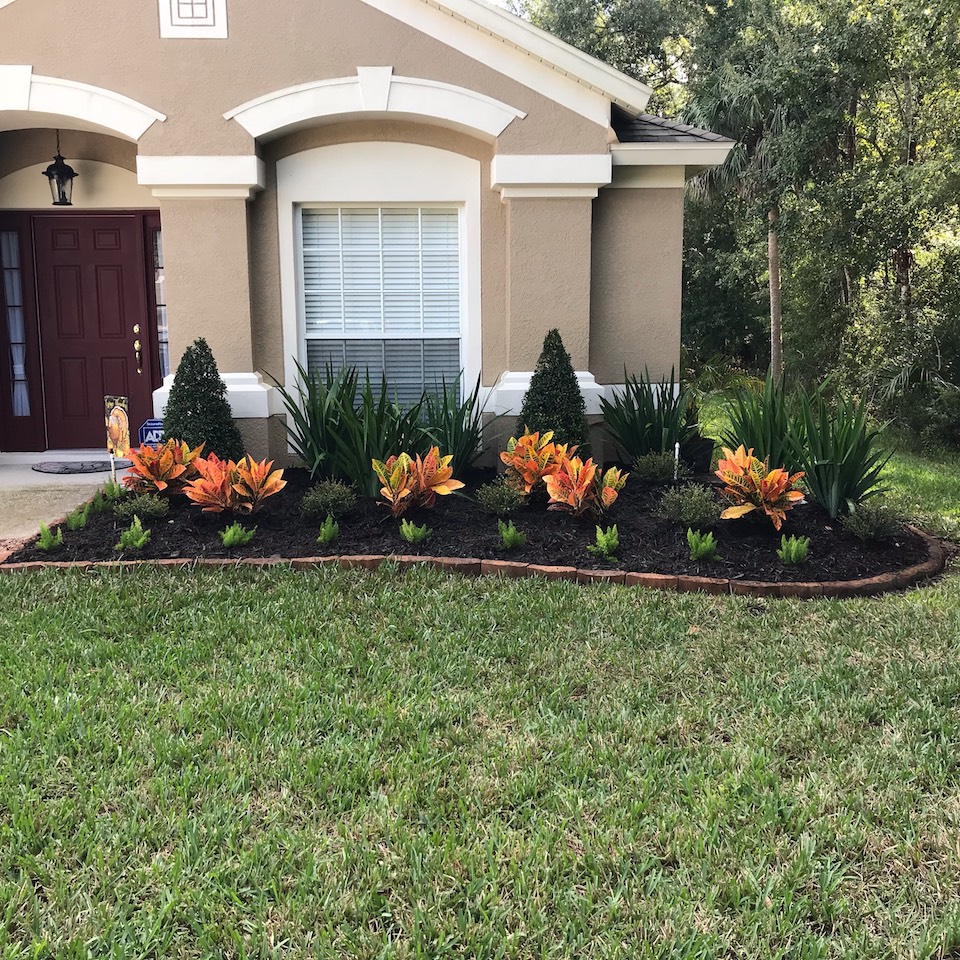Discover the Perks of Sustainable Palm Desert Landscaping Techniques
Discover the Perks of Sustainable Palm Desert Landscaping Techniques
Blog Article
A Comprehensive Guide to Designing and Implementing Effective Landscaping Solutions
The art and science of landscape design expand past plain appearances; they include a thoughtful integration of layout principles, ecological stewardship, and functional execution. What approaches can one use to make sure these landscapes not only flourish yet also prosper in harmony with their environments?

Recognizing Landscape Style Principles
One could wonder what foundational components add to reliable landscape style. At its core, successful landscape layout depends upon numerous essential principles that guide the plan and selection of components within a space. These concepts include unity, rhythm, equilibrium, and percentage, each serving to develop a harmonious exterior environment.
Unity describes the natural connection amongst various parts, making certain that they collaborate cosmetically and functionally. Balance can be attained via balanced or unbalanced setups, enabling the landscape to really feel stable and welcoming. Proportion includes recognizing the scale of aspects in regard to each other and the surrounding setting, promoting aesthetic consistency and comfort.

Examining Your Outdoor Room
Before carrying out the concepts of landscape design, an extensive analysis of your outdoor space is crucial. This initial examination helps define the range of your landscape design task and ensures that your layout aligns with the distinct features of your residential or commercial property. Begin by examining the measurements of your room, taking exact dimensions to recognize the available area for various aspects such as pathways, patios, and gardens.
Next, observe the existing functions of your landscape, consisting of topography, soil high quality, and drain patterns. These aspects substantially affect plant selection and placement. Furthermore, examine the sunlight direct exposure throughout various areas throughout the day, as this will impact the kinds of plants that grow in your garden.
Take into consideration the microclimates developed by frameworks, trees, and various other obstacles, as they can influence temperature level and wetness levels. Take note of any type of existing plants or hardscape components that you desire to get rid of or preserve. This detailed analysis lays the groundwork for a educated and reliable landscape design option, guaranteeing that your style is not only cosmetically pleasing however additionally useful and lasting for several years to find.
Lasting Landscaping Techniques
Including sustainable landscape design techniques is essential for developing an eco responsible outside area. These practices not just advertise environmental balance yet also improve the visual and functional worth of a landscape. One foundational method is the application of native plants, which need less water and upkeep while supporting regional wild animals. Applying efficient irrigation systems, such as drip irrigation, lessens water waste and ensures that plants receive ample wetness.

An additional efficient strategy is the strategic placement of bushes and trees to supply natural windbreaks and color, thus decreasing power costs (Palm Desert Landscaping). Rainfall gardens can be incorporated into the landscape style to handle stormwater drainage effectively, filtering contaminants before they get in rivers
Choosing the Right Plants
Selecting the right plants for your landscape is crucial to accomplishing both visual allure and eco-friendly consistency. The process begins with an understanding of your neighborhood climate, soil conditions, Discover More and the specific microenvironments within your landscape. Evaluating aspects such as sunshine exposure, wetness levels, and existing flora will certainly aid you select use this link plants that grow in your unique setup.
Take into consideration including native plants, as they are well-adapted to regional problems, need less upkeep, and assistance regional wild animals. In addition, picking a diverse range of varieties can enhance biodiversity while reducing the threat of illness and bug outbreaks. It is important to evaluate the growth behaviors, flowering durations, and seasonal shades of potential plants to create a natural and vibrant landscape.
Additionally, believe regarding the intended use the space; as an example, if the location will certainly experience high foot website traffic, go with resistant ground covers. By thoughtfully choosing plants that straighten with both your visual goals and ecological demands, you can create a sustainable landscape that not just boosts your residential property however also adds positively to the bordering environment.

Implementation and Maintenance Methods
As soon as the best plants have actually been picked for your landscape, the focus shifts to efficient execution and recurring maintenance techniques. Effective installment starts with proper site preparation, that includes dirt screening to determine nutrient levels and pH, complied with by modifying the dirt as required. Carefully organize plants according to their growth routines and light requirements, making sure appropriate spacing to advertise healthy growth.
Irrigation is an essential element of implementation. Establish a watering schedule that considers the details requirements of each plant types, changing for seasonal modifications. Using drip watering systems can improve water effectiveness and decrease overflow.
Maintenance techniques should be implemented to guarantee the longevity and vigor of your landscape. Normal jobs consist of weeding, mulching, and pruning to control growth and protect against condition. Fertilization needs to be performed based upon soil tests, giving the essential nutrients without over-fertilizing.
Checking for bugs and illness is essential; early discovery can stop considerable damage. Seasonal changes to maintenance routines, such as winterizing perennials and preparing for spring development, will ensure that your landscape remains healthy and aesthetically enticing year-round.
Final Thought
In conclusion, effective landscape design solutions call for an extensive understanding of layout principles, thorough assessment of exterior spaces, and the application of sustainable strategies. The selection of proper plant types plays a vital function in enhancing visual appeal and environmental resilience - Palm Desert Landscaping. Successful execution and ongoing upkeep even more ensure the durability and vigor of landscapes. By integrating these elements, landscapes can be transformed into beautiful, useful settings that promote biodiversity and contribute favorably to community health.
One could question what fundamental elements add to efficient landscape layout. At its core, effective landscape design hinges on several key principles that direct the setup and option of components within a room.Picking the right plants for your landscape is critical to attaining both aesthetic appeal and environmental consistency. It is important to evaluate the growth practices, growing periods, and seasonal colors of potential plants to develop a natural and directory dynamic landscape.
When the best plants have been picked for your landscape, the focus moves to reliable application and continuous maintenance techniques.
Report this page